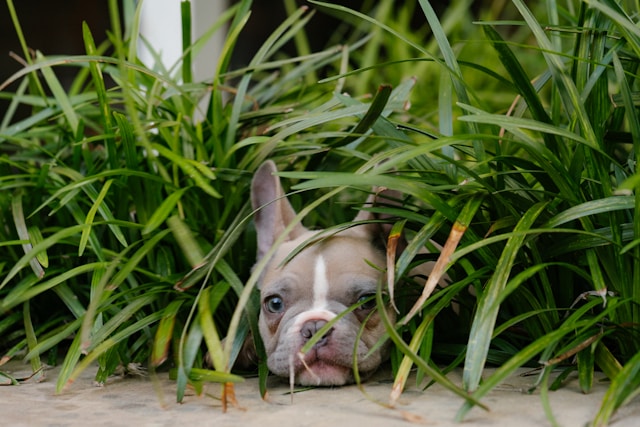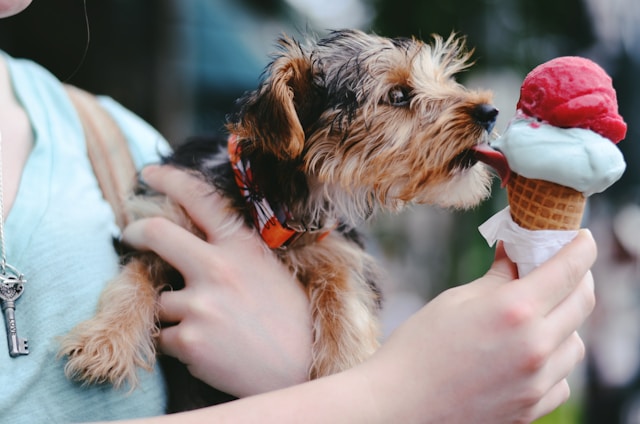Does Your Dog Get Tear Stains Easily? Here’s How to Get Rid of Them

Tear stains on dogs can be more than just a cosmetic issue—they can signal underlying health problems or contribute to discomfort. If you’ve noticed unsightly reddish-brown stains around your dog’s eyes, you’re not alone. Tear staining is a common concern for many pet owners, particularly for certain breeds. In this comprehensive guide, we’ll delve into the causes of tear stains, how to prevent and treat them, and provide actionable tips to help keep your dog’s eyes looking clean and healthy.
Understanding Tear Stains
Tear stains appear as reddish-brown marks around a dog’s eyes, usually on the fur below their eyes. The discoloration is caused by a pigment called porphyrin, which is found in tears. When tears overflow and mix with the fur, porphyrin can leave behind noticeable stains.
Common Breeds Affected
Certain breeds are more prone to tear staining due to their physical characteristics. These include:
- Poodles: Particularly toy and miniatures.
- Cocker Spaniels
- Shih Tzus
- Yorkshire Terriers
- Bichon Frises
These breeds often have facial features that make tear drainage more difficult, leading to more visible staining.
Causes of Tear Stains
Understanding the root cause of tear stains is essential for effective treatment. Here are the main factors that contribute to tear staining:
1. Allergies
Allergies can cause excessive tearing, leading to staining. Common allergens include:
- Pollen
- Dust
- Food ingredients
2. Conformational Issues
Certain breeds have anatomical features that affect tear drainage:
- Shallow Eye Sockets: Can cause tears to overflow.
- Entropion: A condition where the eyelids roll inward, irritating the eyes.
- Ectropion: Where the eyelids roll outward, exposing the inner eyelids.
3. Infections
Infections of the eye or surrounding areas can cause increased tear production:
- Conjunctivitis: Inflammation of the conjunctiva.
- Blepharitis: Inflammation of the eyelid margins.
4. Tear Duct Blockages
Blockages or abnormalities in the tear ducts can lead to tear overflow and staining.
5. Diet and Nutrition
Poor nutrition or food sensitivities can sometimes contribute to tear staining. Low-quality or inappropriate food may affect tear production or composition.
Prevention Strategies
Preventing tear stains involves addressing both the underlying causes and maintaining good eye health. Here are some proactive steps:
1. Maintain Eye Hygiene
- Daily Wiping: Use a clean, damp cloth to gently wipe away any discharge around your dog’s eyes daily.
- Eye Cleaners: Consider using tear stain removers or eye cleaning wipes formulated for dogs.
2. Address Allergies
- Identify Allergens: Work with your veterinarian to identify and manage allergens.
- Allergy Medication: Use medications or supplements recommended by your vet to alleviate allergy symptoms.
3. Ensure Proper Nutrition
- High-Quality Diet: Feed your dog a balanced, high-quality diet that meets their nutritional needs.
- Avoid Food Sensitivities: Consult your vet to identify any food sensitivities or allergies.
4. Regular Vet Check-Ups
- Eye Health: Schedule regular vet visits to monitor and address any eye health issues or anatomical concerns.
- Preventative Care: Ensure your dog receives routine dental care, as dental issues can sometimes affect tear production.
5. Grooming
- Regular Grooming: Regular grooming can help keep fur around the eyes clean and prevent staining.
- Trim Hair: Keep the hair around the eyes trimmed to reduce the risk of moisture retention and staining.
Treatment Options
If tear stains are already present, several treatments can help reduce or eliminate them:
1. Tear Stain Removers
- Commercial Products: Use tear stain removers specifically designed for dogs. These are available as wipes, gels, or powders and can be effective in removing stains.
- Natural Remedies: Some pet owners use natural solutions like diluted apple cider vinegar or lemon juice. However, these should be used with caution and not applied directly to the eyes.
2. Home Remedies
- Eye Cleaning Solutions: Use eye cleaning solutions or saline solution to clean your dog’s eyes and remove any staining.
- Hydration: Ensure your dog has access to clean, fresh water to help flush out excess tear production.
3. Veterinary Treatments
- Medications: If an infection or allergies are causing the staining, your vet may prescribe medications or treatments to address the underlying issue.
- Surgical Options: In some cases, surgical intervention may be necessary to correct anatomical issues like entropion or ectropion.
How to Clean Tear Stains Safely
Cleaning tear stains requires a gentle approach to avoid irritating your dog’s eyes. Here’s how to do it safely:
1. Gather Supplies
- Soft Cloth or Cotton Balls: Use a soft, clean cloth or cotton balls to avoid irritation.
- Eye Cleaner: Use a vet-approved eye cleaner or tear stain remover.
2. Clean Gently
- Moisten Cloth: Dampen the cloth or cotton ball with the cleaning solution.
- Wipe Gently: Gently wipe the stained area, starting from the corner of the eye and moving outward. Avoid getting the solution in the eyes.
- Dry: Use a dry cloth to gently pat the area dry.
3. Regular Maintenance
- Routine Cleaning: Incorporate eye cleaning into your dog’s grooming routine to prevent future staining.
- Monitor: Keep an eye on the area for any signs of irritation or worsening staining.
Additional Tips for Managing Tear Stains
1. Avoid Using Harsh Chemicals
Avoid using harsh chemicals or human products, as they can irritate your dog’s eyes and skin.
2. Check for Underlying Conditions
If tear staining persists despite your efforts, consult your veterinarian to rule out underlying health conditions or infections.
3. Be Patient
Tear stains can take time to improve. Consistent care and attention are key to achieving the best results.
Conclusion
Tear stains can be a frustrating issue for dog owners, but with proper understanding and care, you can manage and reduce their appearance effectively. By addressing the underlying causes, implementing preventive measures, and using appropriate treatments, you can help keep your dog’s eyes clean and healthy. Remember, maintaining good eye hygiene and consulting with your veterinarian are essential steps in managing tear stains and ensuring your dog’s overall well-being.




